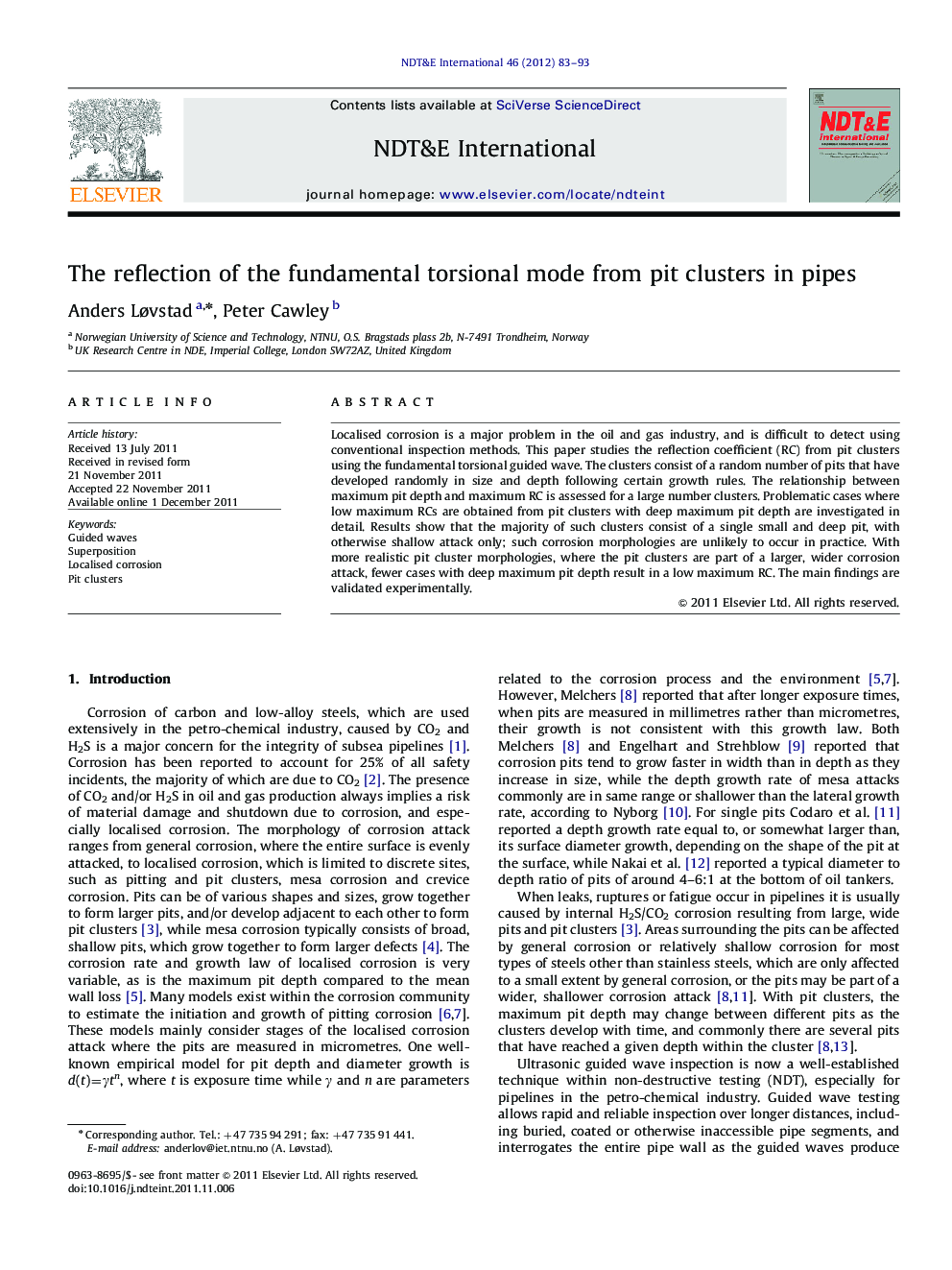| Article ID | Journal | Published Year | Pages | File Type |
|---|---|---|---|---|
| 295296 | NDT & E International | 2012 | 11 Pages |
Localised corrosion is a major problem in the oil and gas industry, and is difficult to detect using conventional inspection methods. This paper studies the reflection coefficient (RC) from pit clusters using the fundamental torsional guided wave. The clusters consist of a random number of pits that have developed randomly in size and depth following certain growth rules. The relationship between maximum pit depth and maximum RC is assessed for a large number clusters. Problematic cases where low maximum RCs are obtained from pit clusters with deep maximum pit depth are investigated in detail. Results show that the majority of such clusters consist of a single small and deep pit, with otherwise shallow attack only; such corrosion morphologies are unlikely to occur in practice. With more realistic pit cluster morphologies, where the pit clusters are part of a larger, wider corrosion attack, fewer cases with deep maximum pit depth result in a low maximum RC. The main findings are validated experimentally.
► Guided wave reflection from randomly generated pit clusters predicted and measured. ► Reflection of T(0,1) mode increases linearly with volume removed with much scatter. ► Single deep pits in otherwise shallow clusters give low reflection coefficient. ► Clusters that are part of a larger, broader attack are more likely to be detected.
